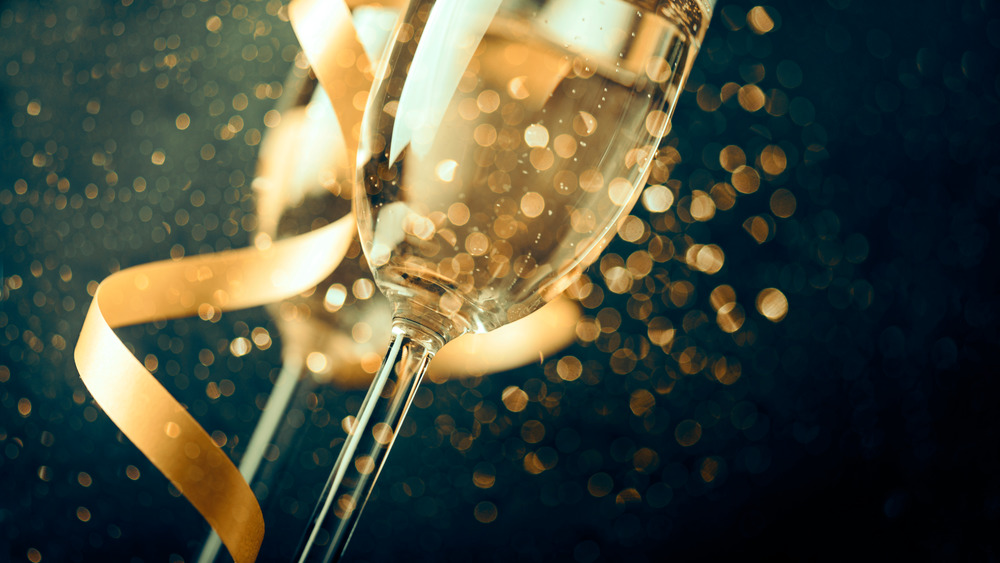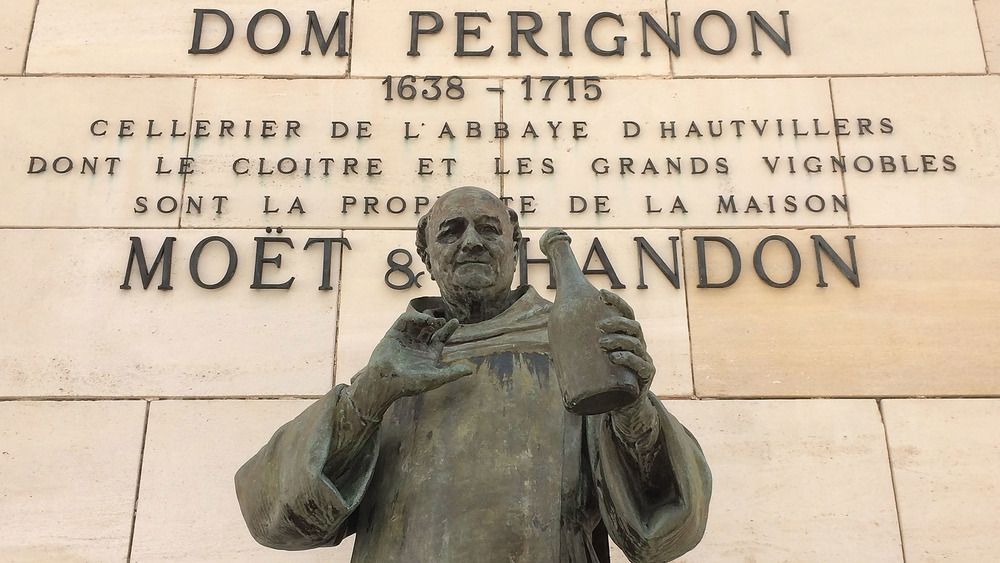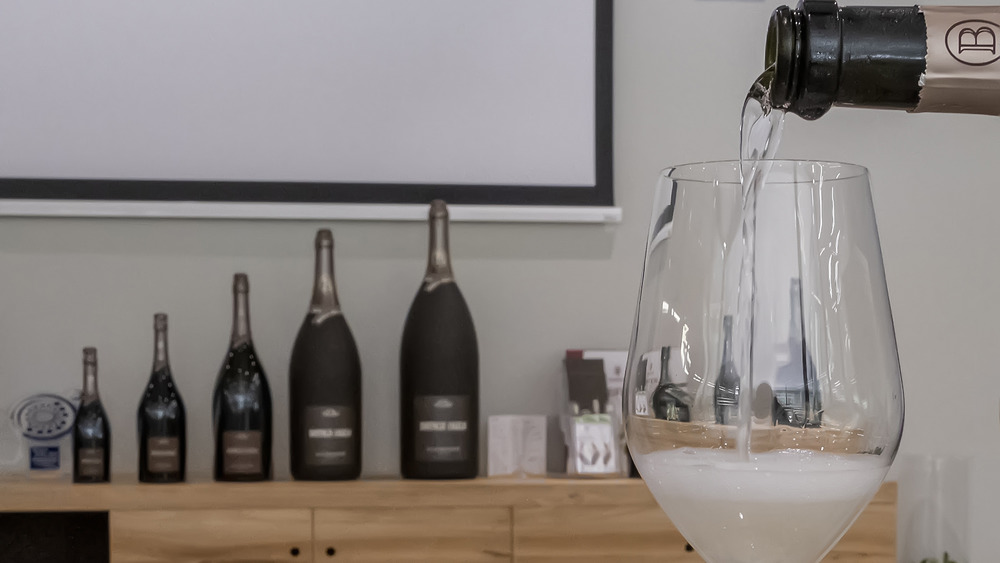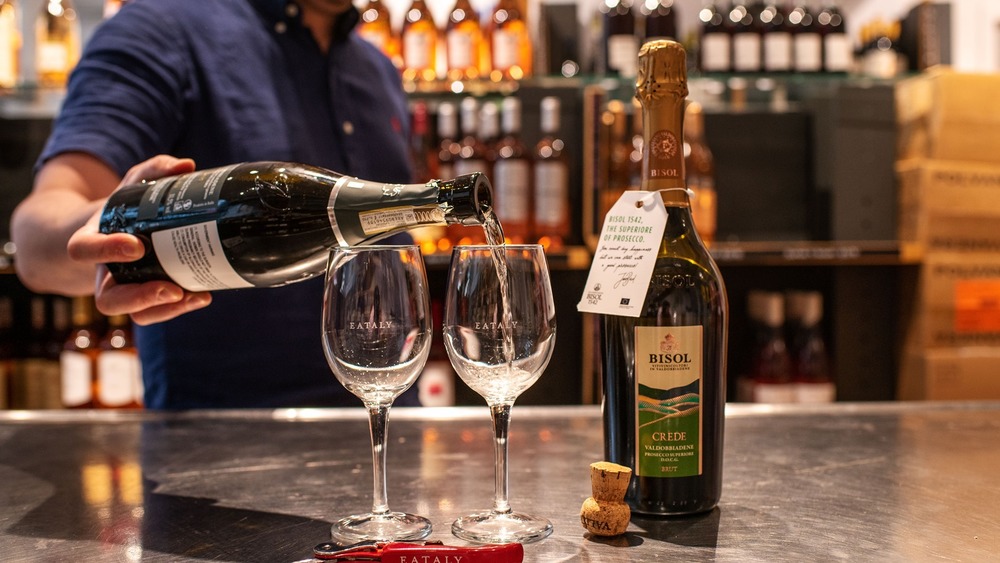Sommelier Explains The Difference Between Champagne, Prosecco And Sparkling Wine
Champagne, sparkling wine, Prosecco ... we hear these terms tossed around, and seemingly used interchangeably, but are they all the same thing, or three different things, or what? One thing we know for sure is, they're all bubbly and boozy, but then again, so is beer, and that's a totally different thing (even Miller High Life, aka the Champagne of beers). While beer tends to be more of an everyday drink, though, we still seem to associate bubbly wine with holidays and celebrations. Could it be that its status has something to do with its expense? While it's possible to buy something called "sparkling wine" for under $10 (via Walmart) — and don't for a minute think that's not what you're getting when you're enjoying those all-you-can-drink brunch mimosas – any bottle bearing the "champagne" label is bound to have a price tag with an extra zero.
In order to help us sort out this nose-tickling head-scratcher, we went straight to an expert, asking Eataly Las Vegas' General Manager of Beverage Marshall Altier to explain it to us in terms even we non-sommeliers can understand. Altier began by quoting an old adage: "all Champagne is sparkling wine, but not all sparkling wine is Champagne," and this can also be said for Prosecco, as well. Sparkling wine is the generic term, while both Champagne and Prosecco are two of the numerous different types of sparkling wine available.
Champagne refers to a region as well as a method
Real Champagne, the kind with a capital C, comes from the Champagne region of France, and the Champagne label, Atelier tells us, speaks not only to the wine's "sense of place," but also "expresses the climate and soil of where it is from." The grapes that grow there are hand-picked in order to elect only the grapes that are just right for bottling.
Authentic Champagne is also marked by the way it is produced, something called the "méthode traditionelle" or "méthode champenoise." While this method of production is also used for other high-quality sparkling wines produced in different areas (even different countries), Atelier notes that such a wine "cannot call itself Champagne if it is not from the region." As to the méthode itself, this involves fermenting (twice — both pre- and-post-bottling) and aging (15+ months for non-vintage, three years for vintage), and all those lovely bubbles are created by adding something Atelier tells us is called a "dosage." What this is, he explains, is "a tiny touch of sugar [used] to create fermentation in the bottle."
Prosecco gets its bubbles a different way
Prosecco, like Champagne, refers to the region where the namesake wine is produced, and any wine labeled Prosecco DOC (according to VinePair, the DOC stands for Denominazione di Origine Controllata and translates to mean "controlled designation of origin") must, by law, come from one of nine different provinces in northeastern Italy. One reason why Proseccos are increasing in popularity may have to do with the fact that they tend to be, as Altier says, "a bit more approachable from a price standpoint" than are Champagnes (particularly if you buy it from Costco).
Altier tells us that Proseccos, unlike Champagnes and other traditional sparkling wines, tend to use a different type of grapes — typically a white grape called Glera, although they are now producing a Rosé variant that also includes Pinot Nero grapes (better known to us by their French name, Pinot Noir), something that Altier feels will "add some interest and breadth" to the region's wines. Another way in which Proseccos differ from Champagnes is that they get their bubbles in a different way. Altier says Proseccos are carbonated via the Charmant Method, in which they undergo a second fermentation in a large stainless steel tank that traps the bubbles produced by the wine.
Helpful Italian wine terminology
Eataly Las Vegas, as its name implies, specializes in Italian cuisine, so it's no surprise that Altier thinks Italian sparkling wines can rival any found in France. Italy's sparkling wine region, he says, produces "some of the best sparkling wines in the world ... wines [that] come from the same grapes as those in Champagne and can hold their own along some of the world's top Champagne producers." Some of the wineries he praises are Ca del Bosco and Bellavista in Lombardy and Ferrari (evidently no relation to the car) in Trento.
While in the U.S. the word "spumante" often refers to super-sweet bubbly, Altier says the word simply means "sparkling" in Italian, and as a wine term it's "a catch-all phrase that encompasses wines that are dry, sweet and semi-sweet." In addition to spumantes, you may also see wines labeled "frizzante." This word, he tells us, means "fizzy," and is applied to a sparkling wine with "small, tighter bubbles that offer a refreshing tingle while helping mask any sweetness, much like Champagne is known for." As far as wine sweetness levels go, he lists these in order: Brut Nature is the driest, with under three grams of sugar, while Extra Dry is just that, with six grams or less. Brut is moderately dry, with between 12-20 grams of sugar, while Dry is, well, not all that dry, with 17-35 grams. Dolce is the sweetest, with up to 50 grams of sugar.



